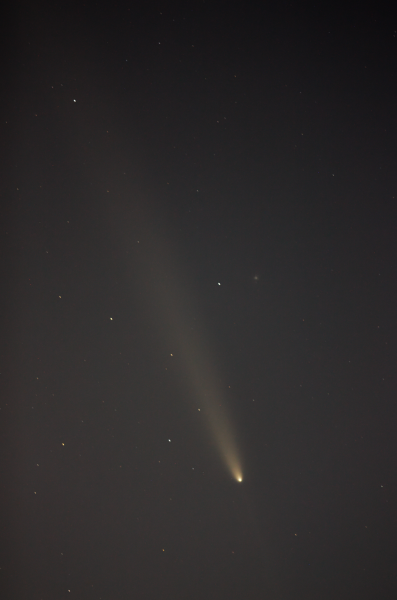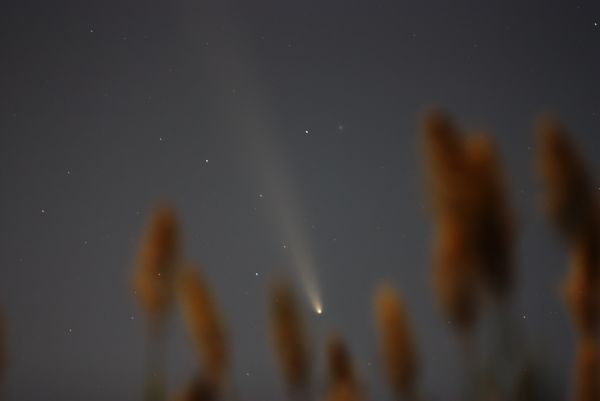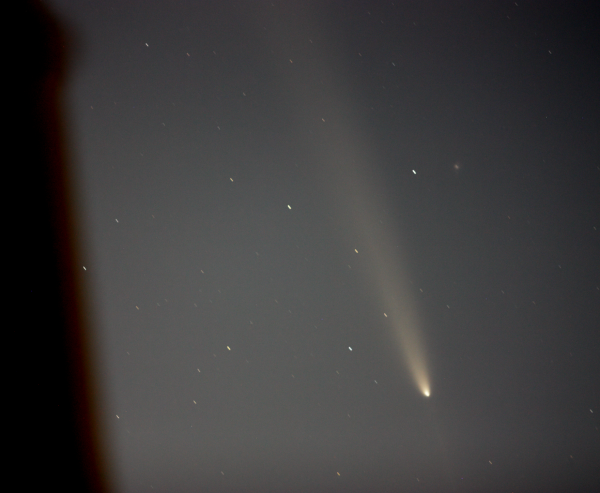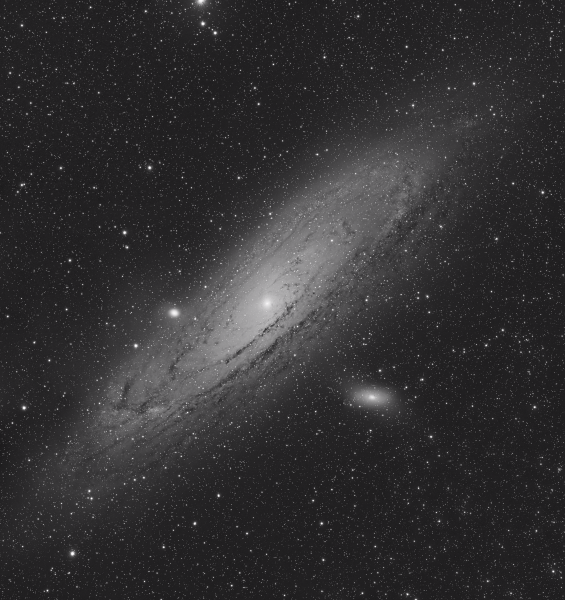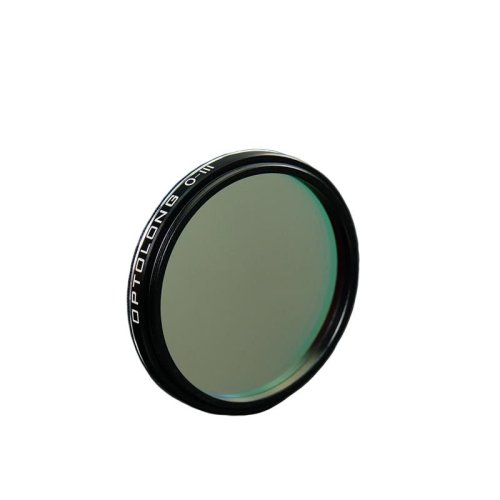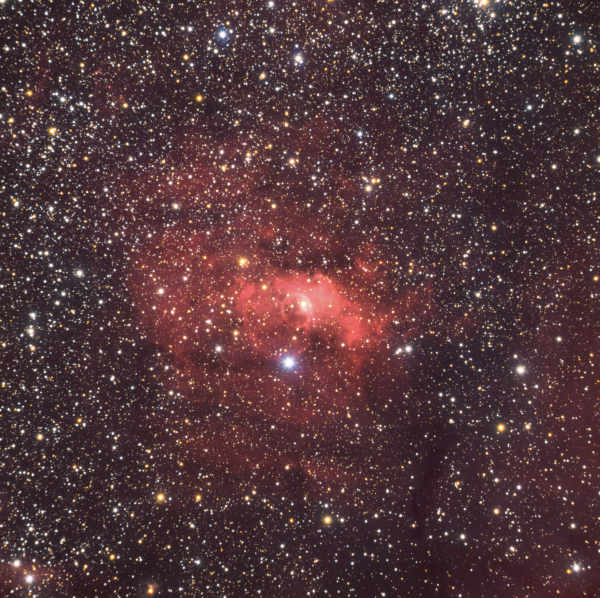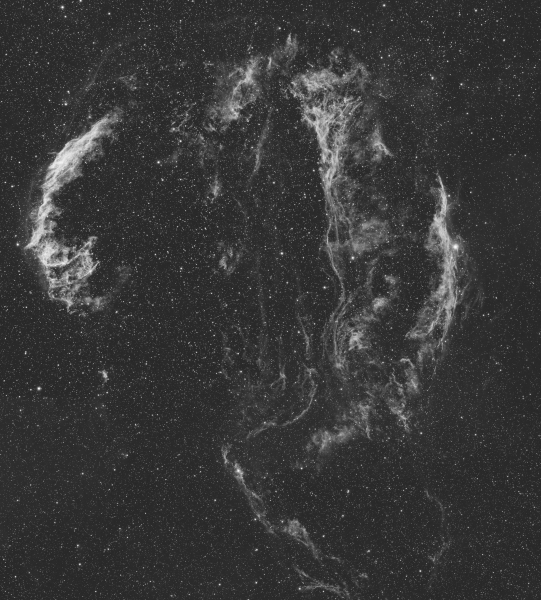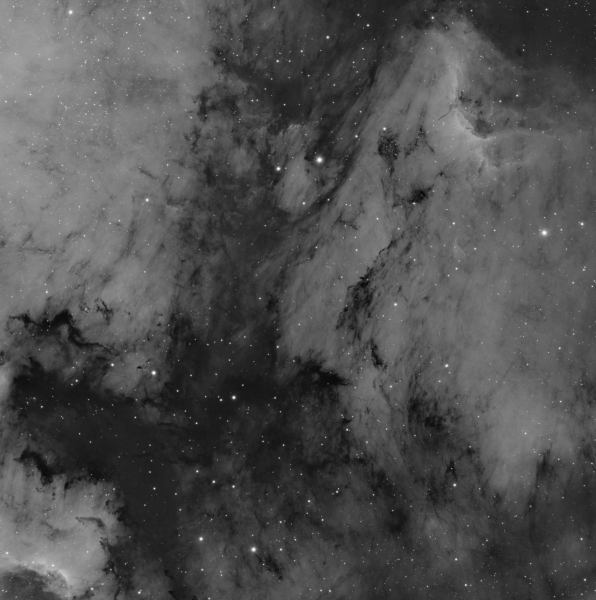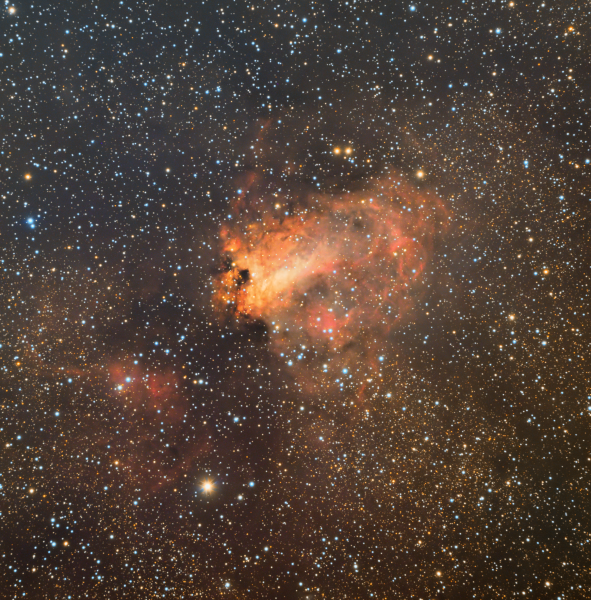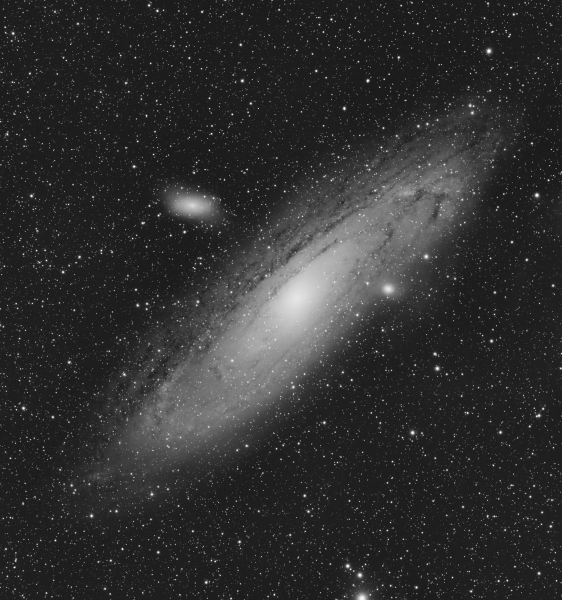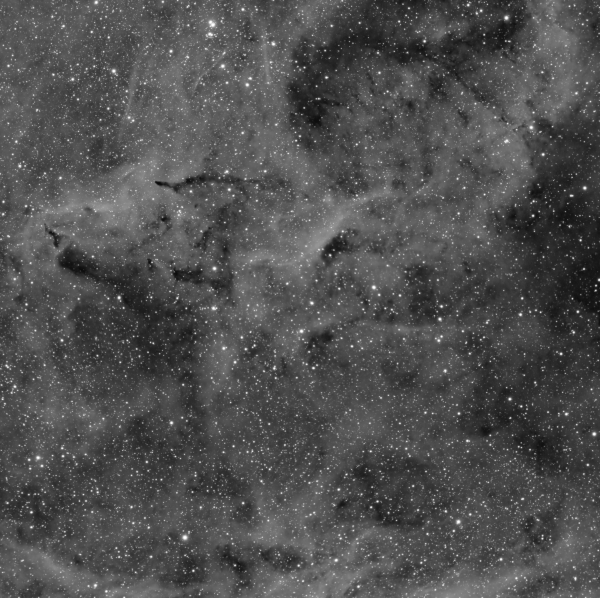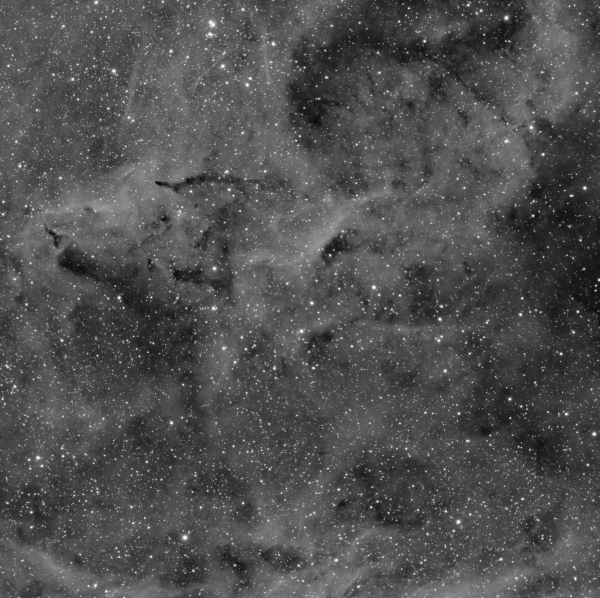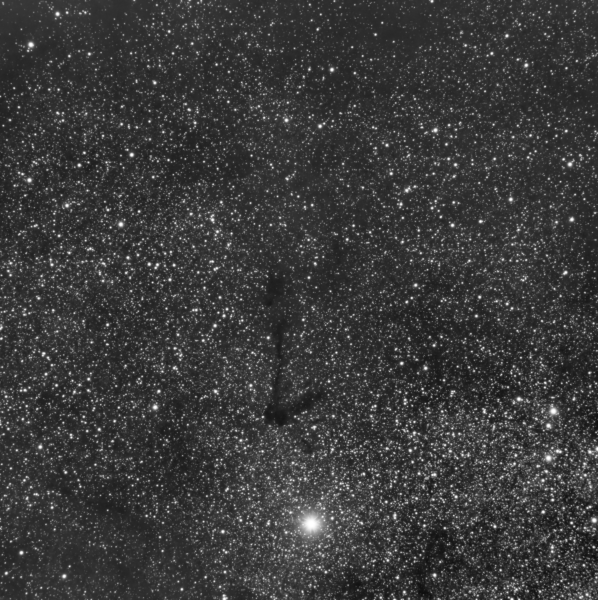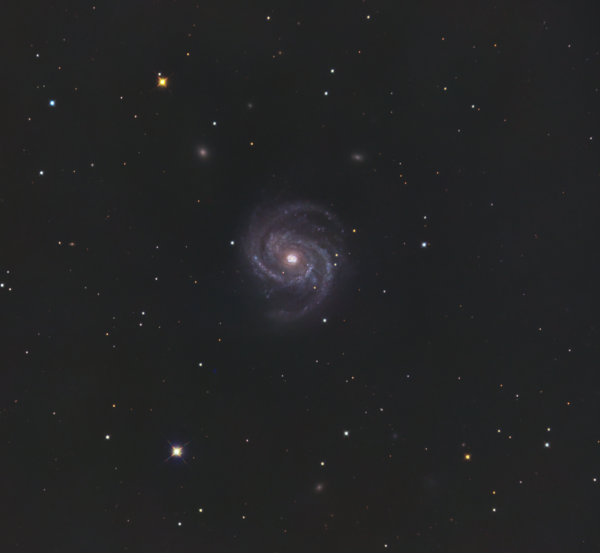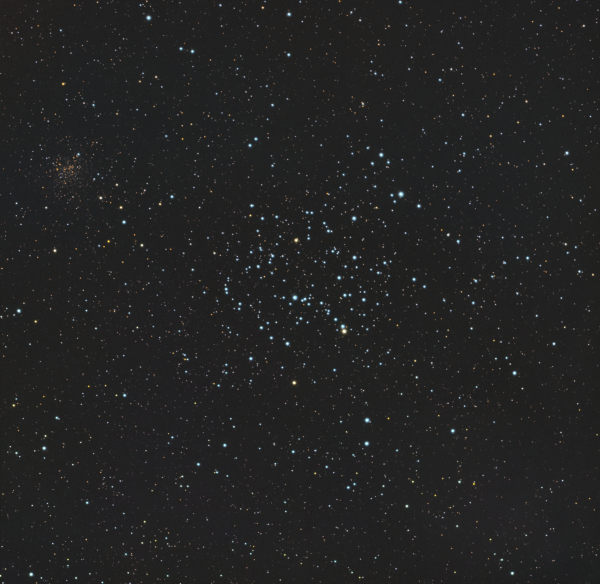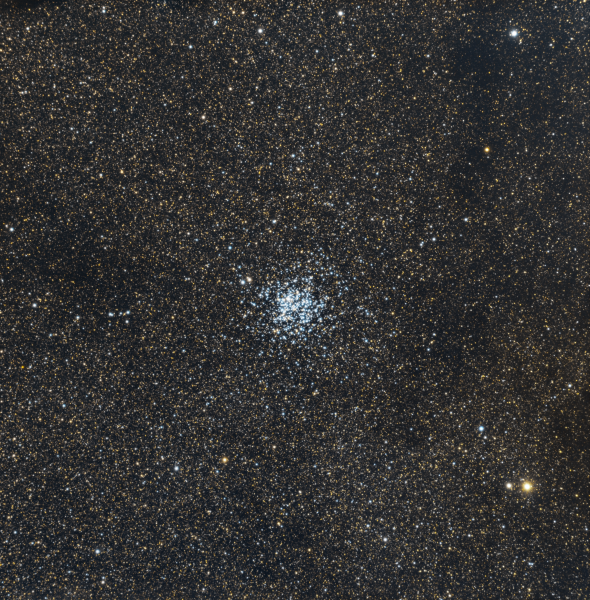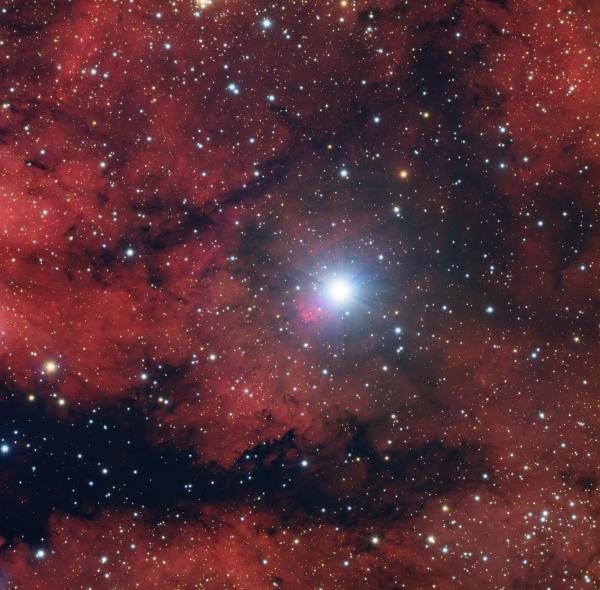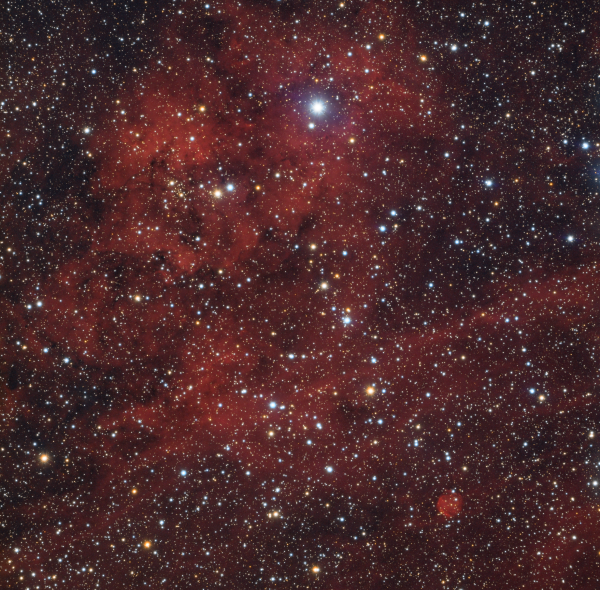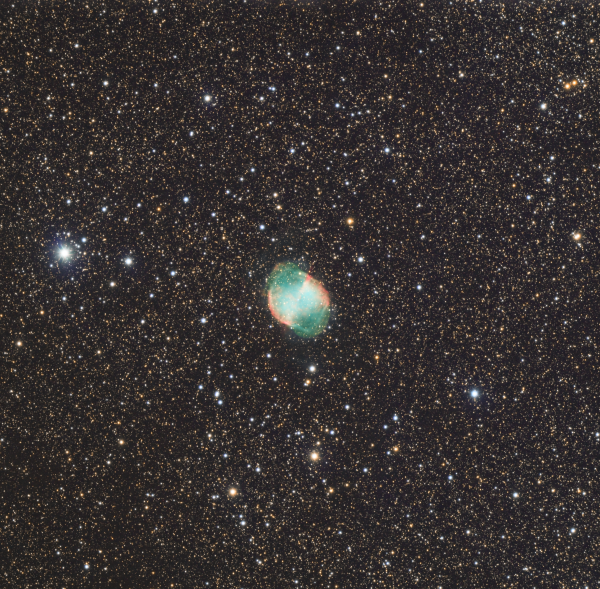-
Αναρτήσεις
3100 -
Εντάχθηκε
-
Τελευταία επίσκεψη
-
Ημέρες που κέρδισε
25
Τύπος περιεχομένου
Forum
Λήψεις
Ιστολόγια
Αστροημερολόγιο
Άρθρα
Αστροφωτογραφίες
Store
Αγγελίες
Όλα αναρτήθηκαν από KC
-
-
-
-
-
- 2 σχόλια
-
- 5
-

-
-
-
The Bubble Nebula (NGC 7635) is an HII region in the constellation Cassiopeia. Its iconic “bubble” shape was created from the stellar wind created by the intensely hot central star (SAO 20575). Also designated Sharpless 162, and Caldwell 11, this unmistakable emission nebula sits within a giant, glowing molecular cloud. The Bubble itself is about 10 light-years in diameter. Imaging Telescope: Vixen ED81s f/7.7 Mount: Skywatcher HEQ5 Synscan Pro (belt mod) Camera: QHY 533M Filter Wheel: QHY CFW3S-SR Guiding camera: ZWO ASI120MM Mini (mono) Guidescope: SkyWatcher EvoGuide 50ED Constellation: Cassiopeia Date: 17-18 Aug 2024 Location: Albireo Observatory 2, Ileia, Greece Sky brightness: B2 Exposure Time: L: 50x300 sec (gain: 56.00, offset: 12.00) 0°C bin 1×1 R: 30x120 sec (gain: 56.00, offset: 12.00) 0°C bin 1×1 G: 30x120 sec (gain: 56.00, offset: 12.00) 0°C bin 1×1 B: 30x120 sec (gain: 56.00, offset: 12.00) 0°C bin 1×1 Ha: 20x900 sec (gain: 56.00, offset: 12.00) 0°C bin 1×1 Acquisition: N.I.N.A v3 Processing: Pixinsight, Photoshop
-
The Veil Nebula is a supernova remnant located 2,100 lightyears away in the Cygnus constellation that spans 110 lightyears across. A supernova remnant is the remains of a star that has ended its life in an explosion known as a supernova. In the case of the Veil Nebula, the star in question was 20 times the mass of the Sun and exploded about 8,000 years ago. A blast wave from the stellar explosion is hitting cooler, more dense interstellar gas and emitting light in the process. The Veil Nebula is part of the larger Cygnus Loop structure, and the delicate filaments and almost fragile-looking structure are what give the Veil Nebula its nickname. Because the Veil Nebula is so expansive, astrophotographers love to capture separate sections of the nebula, which have been allocated different names. Imaging Telescope: Vixen ED81s f/7.7 Mount: Skywatcher HEQ5 Synscan Pro (belt mod) Camera: QHY 533M Filter Wheel: QHY CFW3S-SR Guiding camera: ZWO ASI120MM Mini (mono) Guidescope: SkyWatcher EvoGuide 50ED Constellation: Cygnus Date: 15-16 Aug 2024 Location: Albireo Observatory 2, Ileia, Greece Sky brightness: B2 Exposure Time: 25-pannel mosaic Ha: 25x600 sec (gain: 56.00, offset: 12.00) 0°C bin 1×1 Acquisition: N.I.N.A v3 Processing: Pixinsight, Photoshop
-
The Crescent Nebula, or NGC 6888 as it is formally known, is a distinctive emission nebula that stretches about 25 lightyears across and is located about 5,000 lightyears away from Earth in the Cygnus constellation. Discovered by William Herschel in 1792, the Crescent Nebula is produced by a type of star known as a Wolf-Rayet. Imaging Telescope: Vixen ED81s f/7.7 Mount: Skywatcher HEQ5 Synscan Pro (belt mod) Camera: QHY 533M Filter Wheel: QHY CFW3S-SR Guiding camera: ZWO ASI120MM Mini (mono) Guidescope: SkyWatcher EvoGuide 50ED Constellation: Cygnus Date: 10-11 Aug 2024 Location: Albireo Observatory 2, Ileia, Greece Sky brightness: B2 Exposure Time: L: 50x300 sec (gain: 56.00, offset: 12.00) 0°C bin 1×1 R: 30x120 sec (gain: 56.00, offset: 12.00) 0°C bin 1×1 G: 30x120 sec (gain: 56.00, offset: 12.00) 0°C bin 1×1 B: 30x120 sec (gain: 56.00, offset: 12.00) 0°C bin 1×1 Ha: 20x900 sec (gain: 56.00, offset: 12.00) 0°C bin 1×1 Acquisition: N.I.N.A v3 Processing: Pixinsight, Photoshop
-
This is a 2x2 mosaic of Pelican Nebula. The Pelican Nebula is a star-forming region about 30 light years wide located 1,800 lightyears from Earth. It is also known as IC 5070 and IC 5067, and is found near bright star Deneb in the Cygnus constellation. Imaging Telescope: Vixen ED81s f/7.7 Mount: Skywatcher HEQ5 Synscan Pro (belt mod) Camera: QHY 533M Filter Wheel: QHY CFW3S-SR Guiding camera: ZWO ASI120MM Mini (mono) Guidescope: SkyWatcher EvoGuide 50ED Constellation: Cygnus Date: 3-4 Aug 2024 Location: Albireo Observatory 2, Ileia, Greece Sky brightness: B2 Exposure Time: 4-pannel mosaic Ha: 36x600 sec (gain: 56.00, offset: 12.00) 0°C bin 1×1 Acquisition: N.I.N.A v3 Processing: Pixinsight, Photoshop
-
M17, also known as the Omega Nebula or Swan Nebula, is one of the largest star-forming regions in the Milky Way galaxy. The Omega Nebula was discovered in 1745 by the Swiss astronomer Jean-Philippe Loys de Chéseaux. It is located 5,500 light-years from Earth in the constellation Sagittarius. The nebula has an apparent magnitude of 6 and can be seen with a pair of binoculars. M17, which appears near M16 and M18 in the sky, is best viewed on clear nights in August. Imaging Telescope: Vixen ED81s f/7.7 Mount: Skywatcher HEQ5 Synscan Pro (belt mod) Camera: QHY 533M Filter Wheel: QHY CFW3S-SR Filters: L,R,G,B Guiding camera: ZWO ASI120MM Mini (mono) Guidescope: SkyWatcher EvoGuide 50ED Constellation: Sagittarius Date: 13-14 Aug 2024 Location: Albireo Observatory 3, Achaia, Greece Sky brightness: B2 Exposure Time: L: 20x300 sec (gain: 56.00, offset: 12.00) 0°C bin 1×1 R: 20x60 sec (gain: 56.00, offset: 12.00) 0°C bin 1×1 G: 20x60 sec (gain: 56.00, offset: 12.00) 0°C bin 1×1 B: 20x60 sec (gain: 56.00, offset: 12.00) 0°C bin 1×1 Acquisition: N.I.N.A v3 Processing: Pixinsight, Photoshop (c) https://albireoobservatory.blogspot.com/2024/08/messier-17.html
-
-
This 3x3 mosaic of M31 is my largest project so far. The 9 panels total 6 hours of exposure, using my QHY533M and a luminance filter. 36 files where stacked using Pixinsight into the nine raw panels. The mosaic assembly was done using Pixinsight (image solver, mosaic by coordinates, and gradientmerge mosaic). Further processing was also done in Pixinsight and Photoshop. Imaging Telescope: Vixen ED81s f/7.7 Mount: Skywatcher HEQ5 Synscan Pro (belt mod) Camera: QHY 533M Filter Wheel: QHY CFW3S-SR Filters: L Guiding camera: ZWO ASI120MM Mini (mono) Guidescope: SkyWatcher EvoGuide 50ED Constellation: Andromeda Date: 12-13 Aug 2024 Location: Albireo Observatory 3, Achaia, Greece Sky brightness: B2 Exposure Time: 9-pannel mosaic L: 36x600 sec (gain: 56.00, offset: 12.00) 0°C bin 1×1 Acquisition: N.I.N.A v3 Processing: Pixinsight, Photoshop
- 2 σχόλια
-
- 3
-

-
Imaging Telescope: Vixen ED81s f/7.7 Mount: Skywatcher HEQ5 Synscan Pro (belt mod) Camera: QHY 533M Filter Wheel: QHY CFW3S-SR Filters: Ha Guiding camera: ZWO ASI120MM Mini (mono) Guidescope: SkyWatcher EvoGuide 50ED Constellation: Cygnus Date: 09-10 Aug 2024 Location: Albireo Observatory 2, Ileia, Greece Sky brightness: B3 Exposure Time: 4-pannel mosaic Ha: 27x600 sec (gain: 56.00, offset: 12.00) 0°C bin 1×1 Acquisition: N.I.N.A v3 Processing: Pixinsight, Photoshop
-
Imaging Telescope: Vixen ED81s f/7.7 Mount: Skywatcher HEQ5 Synscan Pro (belt mod) Camera: QHY 533M Filter Wheel: QHY CFW3S-SR Filters: Ha Guiding camera: ZWO ASI120MM Mini (mono) Guidescope: SkyWatcher EvoGuide 50ED Constellation: Cygnus Date: 09-10 Aug 2024 Location: Albireo Observatory 2, Ileia, Greece Sky brightness: B3 Exposure Time: 4-pannel mosaic Ha: 27x600 sec (gain: 56.00, offset: 12.00) 0°C bin 1×1 Acquisition: N.I.N.A v3 Processing: Pixinsight, Photoshop
-
Barnard 104 is a dark nebula in the constellation Scutum , just north of the star Beta Scuti. It is commonly called the Fishhook Nebula, the Checkmark Nebula, and the "L" Nebula. Dark nebulae – or absorption nebulae – are clouds of gas and dust in space dense enough to obscure and block light from background stars. These vast clouds are mostly composed of molecular hydrogen. Often, they are locations where material is coalescing to form new stars. Imaging Telescope: Vixen ED81s f/7.7 Mount: Skywatcher HEQ5 Synscan Pro (belt mod) Camera: QHY 533M Filter Wheel: QHY CFW3S-SR Filters: L Guiding camera: ZWO ASI120MM Mini (mono) Guidescope: SkyWatcher EvoGuide 50ED Constellation: Scutum Date: 13 July 2024 Location: Korinthos - Greece - Albireo Observatory 1 Sky brightness: B6 Exposure Time: L: 20x120 sec (gain: 56.00, offset: 12.00) 0°C bin 1×1 Acquisition: N.I.N.A v3 Processing: Pixinsight, Photoshop (c) https://albireoobservatory.blogspot.com/
-
Imaging Telescope: Vixen VC200L f/6.4 Mount: Skywatcher HEQ5 Synscan Pro (belt mod) Camera: QHY 533M Filter Wheel: QHY CFW3S-SR Guiding: DMK21AU04 + 9x50 Skywatcher finder Filters: L,R,G,B Constellation: Coma Berenices Date: May 18-19, 2024 Location: Korinthos - Greece - Albireo Observatory 1 Exposure Time: L,R,G,B: 15x120 sec (gain: 50.00, offset: 60.00) 0°C bin 1×1 Calibration Frames: Darks, Flats, Bias, Dark Flats Acquisition: N.I.N.A, phd2 Processing: Pixinsight, Photoshop
-
-
Messier 35 or M35, also known as NGC 2168, is an open cluster of stars in the northern constellation of Gemini. It was discovered by Philippe Loys de Chéseaux around 1745 and independently discovered by John Bevis before 1750. The cluster is scattered over an area of the sky almost the size of the full moon and is located 3,870 light-years (1,186 parsecs) from Earth. The compact open cluster NGC 2158 lies directly southwest of M35. Imaging Telescope: Vixen ED81s f/7.7 Mount: Skywatcher HEQ5 Synscan Pro (belt mod) Camera: QHY 533M Filter Wheel: QHY CFW3S-SR Filters: L,R,G,B Guiding camera: ZWO ASI120MM Mini (mono) Guidescope: SkyWatcher EvoGuide 50ED Constellation: Gemini Date: 27-28 April 2024 Location: Kifisia - Athens, Greece Sky brightness: B7 Exposure Time: L: 40x60 sec (gain: 56.00, offset: 12.00) 0°C bin 1×1 R: 40x60 sec (gain: 56.00, offset: 12.00) 0°C bin 1×1 G: 40x60 sec (gain: 56.00, offset: 12.00) 0°C bin 1×1 B: 40x60 sec (gain: 56.00, offset: 12.00) 0°C bin 1×1 Acquisition: N.I.N.A v3 Processing: Pixinsight, Photoshop
-
Featured above is the Wild Duck star cluster (also known as M11) sitting in the constellation of Scutum the Shield. Composed of nearly 3,000 stars, this compact grouping, one of the most compact open star clusters, lies some 6000 light years away. As viewed from the Northern Hemisphere it resides in the southern sky, within the glow of the Milky Way and between the constellations of Aquila and Sagittarius. Though it's highest in the sky in late summer and early fall, it can only be observed with a moderate-sized telescope. Detecting a duck of any kind in this cluster is no more challenging than identifying a shield in Scutum. Imaging Telescope: Vixen ED81s f/7.7 Mount: Skywatcher HEQ5 Synscan Pro (belt mod) Camera: QHY 533M Filter Wheel: QHY CFW3S-SR Filters: L,R,G,B Guiding camera: ZWO ASI120MM Mini (mono) Guidescope: SkyWatcher EvoGuide 50ED Constellation: Scutum Date: 15-16 August-2023 Location: Korinthos - Greece - Albireo Observatory 1 Sky brightness: B7 Exposure Time: L: 12x120 sec (gain: 56.00, offset: 12.00) 0°C bin 1×1 R: 12x120 sec (gain: 56.00, offset: 12.00) 0°C bin 1×1 G: 12x120 sec (gain: 56.00, offset: 12.00) 0°C bin 1×1 B: 12x120 sec (gain: 56.00, offset: 12.00) 0°C bin 1×1 Calibration Frames: Darks, Flats, Dark Flats Acquisition: ACP Expert, MaximDL Processing: Pixinsight, Photoshop
-
The Gamma Cygni Nebula, also known as the Sadr Region or IC 1318 or Sharpless 108, is a diffuse emission nebula that can be seen around Sadr (Gamma Cygni), the star at the center of the Northern Cross, which marks the heart of Cygnus, the Swan. Despite the name, the star and the nebula are unrelated. Even though it looks embedded in the nebulosity, Sadr is approximately 1,800 light years distant, while the nebula is much further away, at 4,900 light years. The Gamma Cygni Nebula is considered an emission nebula because it is ionized by the radiation of the nearby stars and it emits visible light as a result. The visible portion of the H II region stretches over an area more than 100 light years across. The nebula is illuminated by an O9-class star which is visually obscured by interstellar material. Imaging Telescope: Vixen ED81s f/7.7 Mount: Skywatcher HEQ5 Synscan Pro (belt mod) Camera: QHY 533M Filter Wheel: QHY CFW3S-SR Filters: L,R,G,B Guiding camera: ZWO ASI120MM Mini (mono) Guidescope: SkyWatcher EvoGuide 50ED Constellation: Cygnus Date: 12-13 August-2023 Location: Sekoulas - Ileia - Greece - Albireo Observatory 2 Sky brightness: B2 Exposure Time: L: 12x600 sec (gain: 56.00, offset: 12.00) 0°C bin 1×1 R: 12x600 sec (gain: 56.00, offset: 12.00) 0°C bin 1×1 G: 12x600 sec (gain: 56.00, offset: 12.00) 0°C bin 1×1 B: 12x600 sec (gain: 56.00, offset: 12.00) 0°C bin 1×1 Ha: 4x1800 sec (gain: 56.00, offset: 12.00) 0°C bin 1×1 Calibration Frames: Darks, Flats, Dark Flats Acquisition: ACP Expert, MaximDL Processing: Pixinsight, Photoshop
-
SH2-116 is a small nebula that is also known as Abell 71 and sits not from the bright star Deneb in Cygnus. This object was first classified as a planetary nebula but recent studies show it to be an HII region instead. This object is best imaged using a larger telescope because of its size and some of the nice structure it has. However, SH2-115 is right next to it and a larger field of view can easily pick up both of them. The nebula surrounding SH2-116 is indeed part of SH2-115. Imaging Telescope: Vixen ED81s f/7.7 Mount: Skywatcher HEQ5 Synscan Pro (belt mod) Camera: QHY 533M Filter Wheel: QHY CFW3S-SR Filters: L,R,G,B Guiding camera: ZWO ASI120MM Mini (mono) Guidescope: SkyWatcher EvoGuide 50ED Constellation: Cygnus Date: 09-10 August-2023 Location: Sekoulas - Ileia - Greece - Albireo Observatory 2 Sky brightness: B2 Exposure Time: L: 12x600 sec (gain: 56.00, offset: 12.00) 0°C bin 1×1 R: 12x600 sec (gain: 56.00, offset: 12.00) 0°C bin 1×1 G: 12x600 sec (gain: 56.00, offset: 12.00) 0°C bin 1×1 B: 12x600 sec (gain: 56.00, offset: 12.00) 0°C bin 1×1 Ha: 4x1800 sec (gain: 56.00, offset: 12.00) 0°C bin 1×1 Calibration Frames: Darks, Flats, Dark Flats Acquisition: ACP Expert, MaximDL Processing: Pixinsight, Photoshop
-
Imaging Telescope: Vixen ED81s f/7.7 Mount: Skywatcher HEQ5 Synscan Pro (belt mod) Camera: QHY 533M Filter Wheel: QHY CFW3S-SR Filters: L,R,G,B Guiding camera: ZWO ASI120MM Mini (mono) Guidescope: SkyWatcher EvoGuide 50ED Constellation: Vulpecula Date: 17-18 August-2023 Location: Sekoulas - Ileia - Greece - Albireo Observatory 2 Sky brightness: B2 Exposure Time: L: 12x300 sec (gain: 56.00, offset: 12.00) 0°C bin 1×1 R: 12x300 sec (gain: 56.00, offset: 12.00) 0°C bin 1×1 G: 12x300 sec (gain: 56.00, offset: 12.00) 0°C bin 1×1 B: 12x300 sec (gain: 56.00, offset: 12.00) 0°C bin 1×1 Calibration Frames: Darks, Flats, Dark Flats Acquisition: ACP Expert, MaximDL Processing: Pixinsight, Photoshop Όλες οι αντιδράσεις: 11



